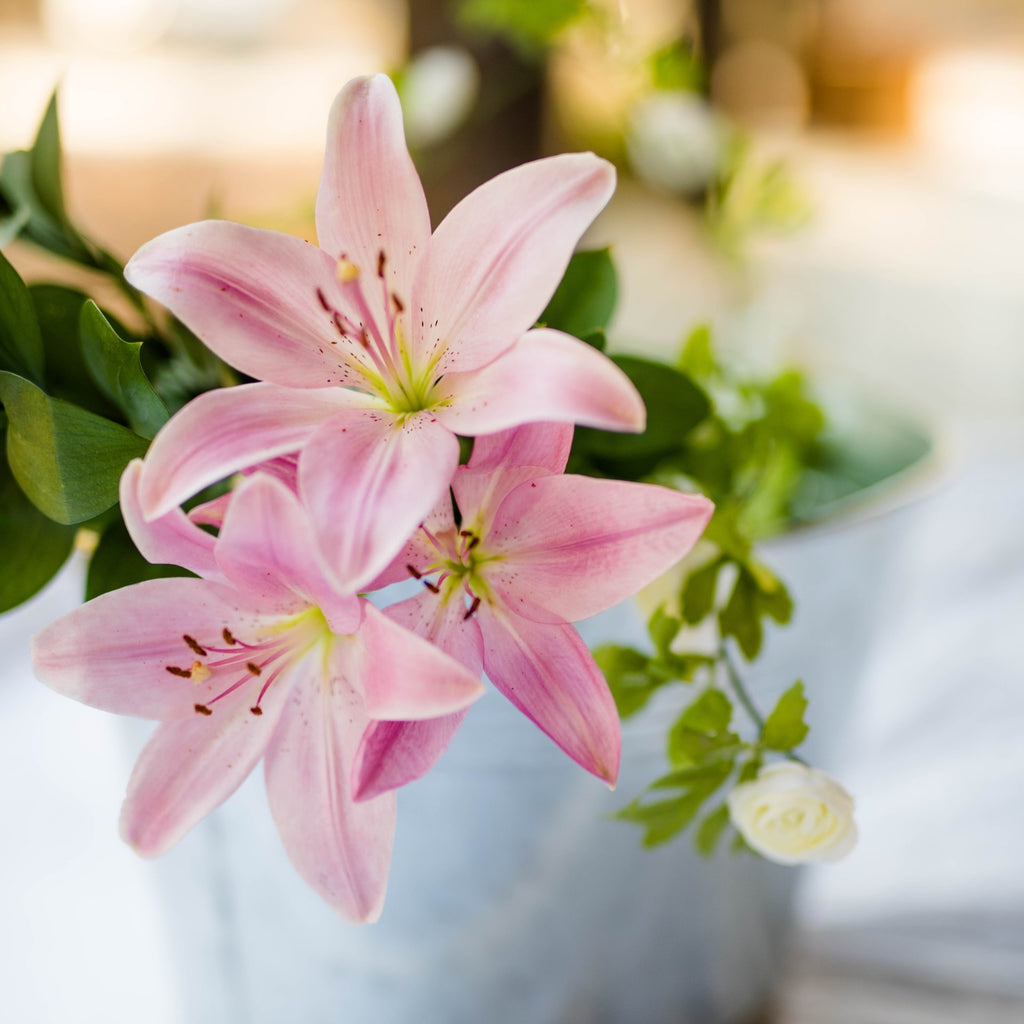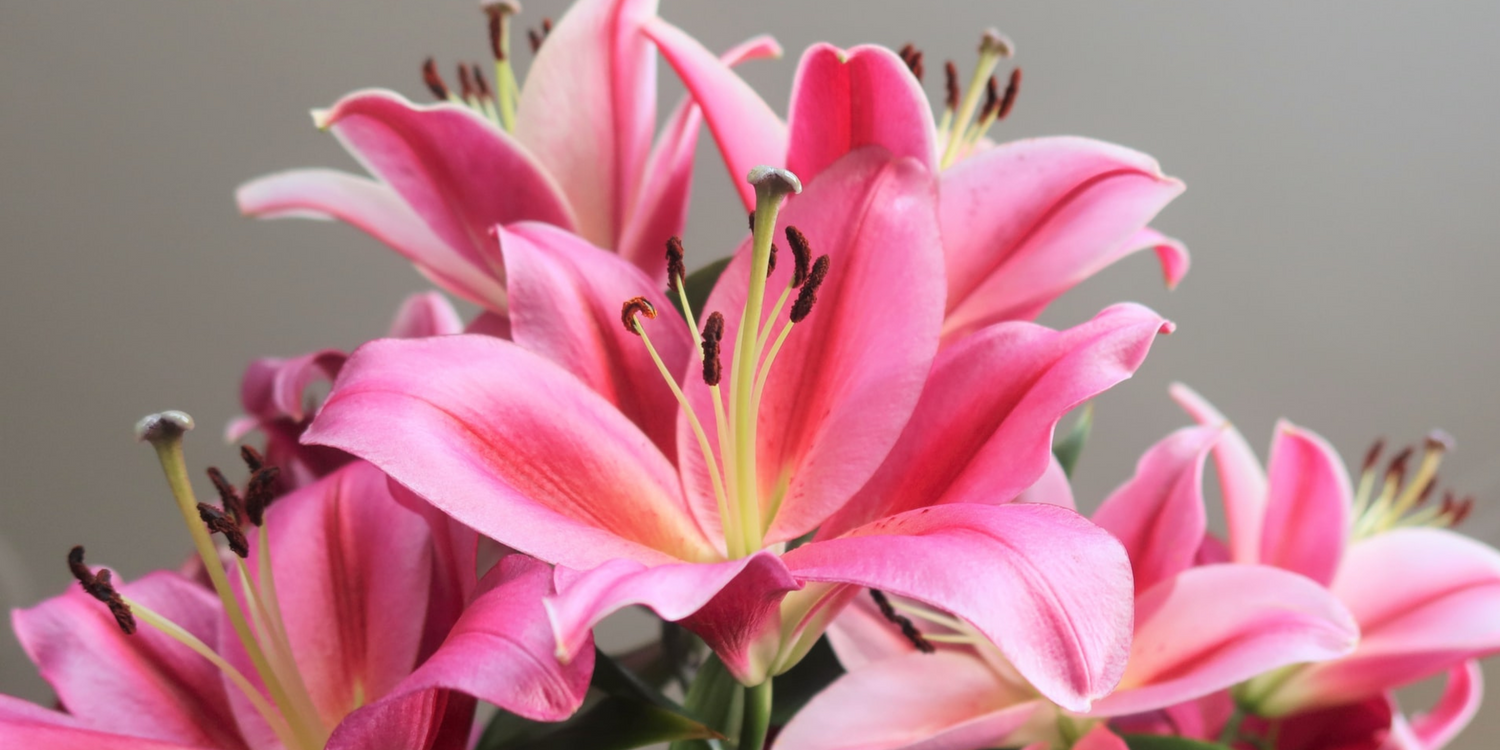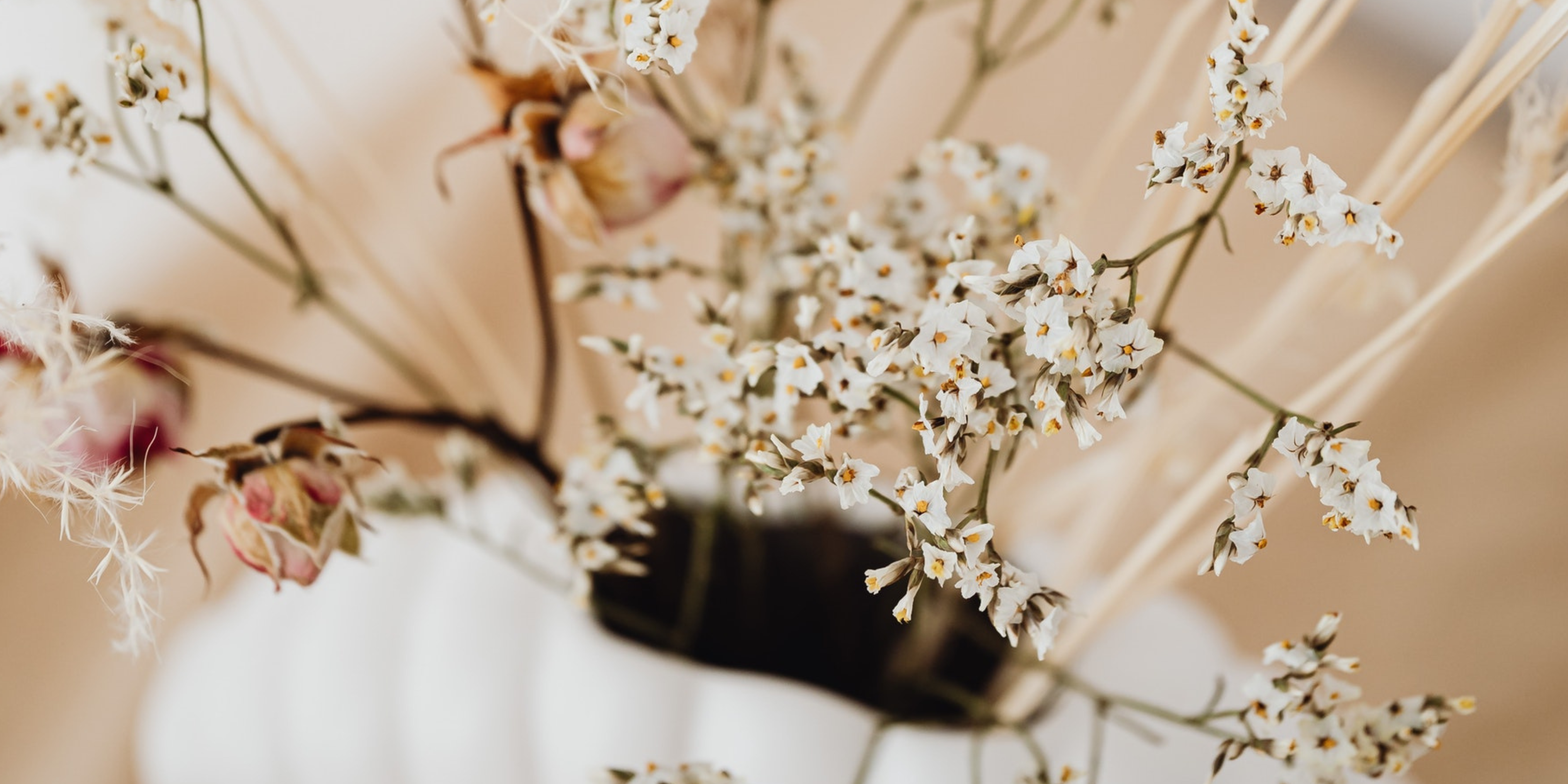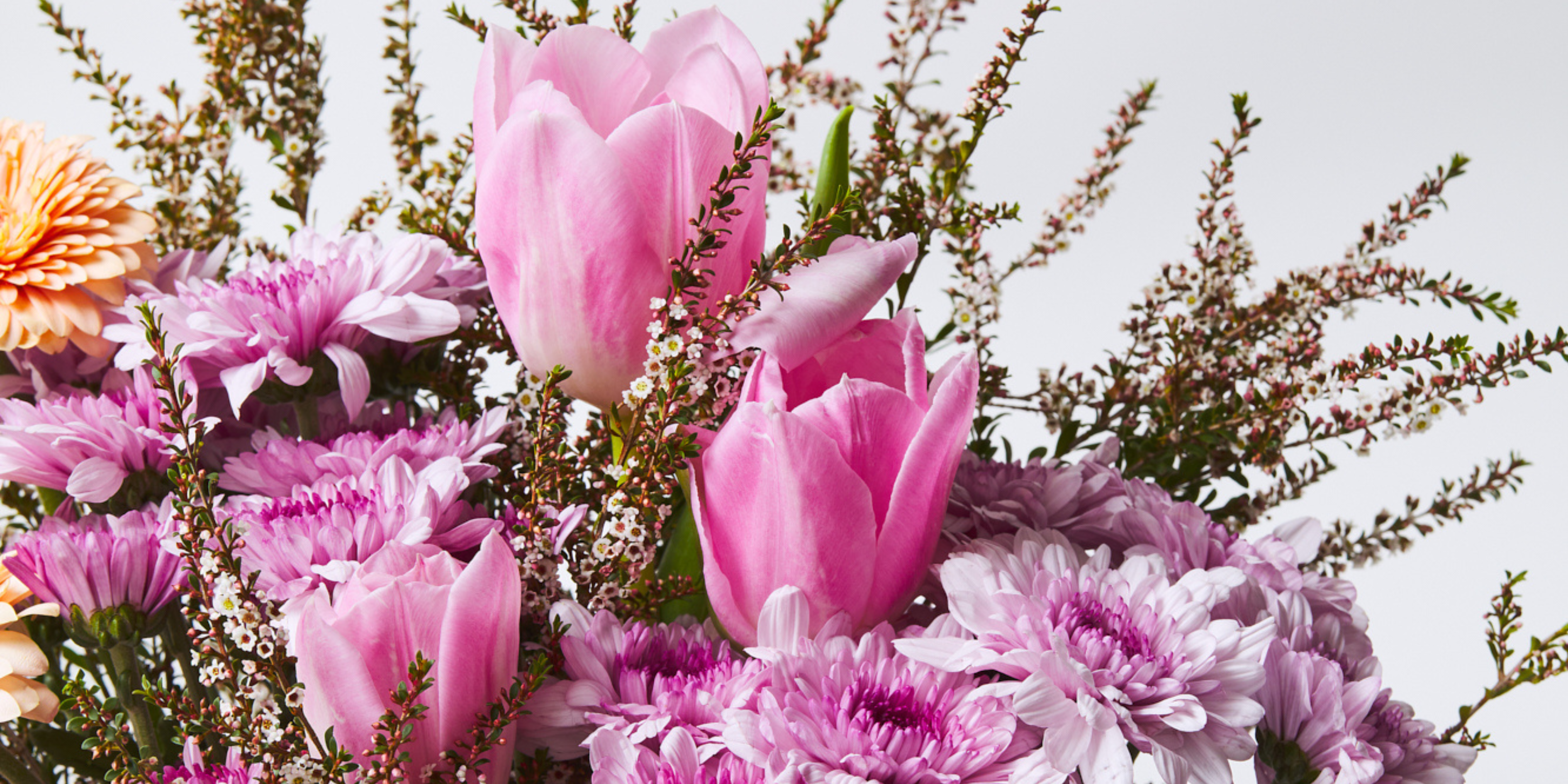Right up there with roses, tulips and sunflowers, lilies are one of the most popular cut flowers in the world. They’re beautiful in a bunch on their own, but also make great additions to larger arrangements.
Different kinds and colours of flowers have different meanings, and lilies are no exception. So if you’ve always wondered, “What do lilies represent?”—keep reading, and you’ll find out!
Lily flower symbolism & meaning
Lilies have centuries of significance and symbolism behind them, making them one of the most meaningful flowers you can give to someone.
In ancient Greek mythology, it’s said that lilies grew from the goddess Hera’s spilled breast milk. In Christianity, the Madonna lily (Lilium candidum) is associated with the Virgin Mary, while the Easter lily (Lilium longiflorum) is often used to decorate churches during Easter, as the flower is said to have sprouted from the ground where Christ’s blood fell during His crucifixion.
With this history in mind, it’s easy to see how lilies have come to represent purity, life, rebirth and remembrance. But the meaning of the lily flower can change, depending on the colour and the occasion.
White lilies

White lilies represent the key theme of purity and rebirth. This meaning makes them a perfect flower gift for several different occasions, including weddings, funerals and baby showers.
White lilies in a funeral flower arrangement symbolise the deceased's return to a state of innocence. At a baby shower, white lilies perfectly represent a newborn baby’s innocence. In a wedding bouquet, white lilies may symbolise the purity of the bride.
Pink lilies

Pink lilies symbolise prosperity, making them a perfect gift for graduations, promotions or when someone embarks on a new career path.
Like many pink flowers, pink lilies can also be used to convey love, compassion and femininity. They’re an ideal flower gifting choice from mother to daughter, sister to sister, or between girl friends.
Red lilies

Similarly to pink lilies, red lilies represent love or, more specifically, passion. Red lilies make a great alternative to red roses for Valentine’s Day and other romantic flower gifting occasions.
Yellow lilies

Like many other yellow flowers, yellow lilies have come to symbolise joy, friendship and gratitude.
Gift yellow lilies to someone when they’ve been feeling a bit under the weather or having a rough time, or when you just want to put a smile on their face.
When a “thank you” is on the cards, yellow lilies are again the perfect choice. They’re also a lovely gift between friends, including when you need to apologise to a friend.
Orange lilies

Orange lilies represent confidence, energy and honour. They’re the perfect gift to send a loved one who’s undertaking exams, going for a promotion at work or about to do something challenging.
Just like yellow lilies, orange lilies are a bright and cheerful flower, making them ideal for saying thanks or for simply putting a smile on someone’s face.
Interesting facts about lilies
Now that you know the fascinating symbolism and meaning of lilies, read on for some other interesting facts about lilies.
Lilies are the traditional flower for 30th wedding anniversaries
Each 5-year wedding anniversary has its own traditional flower. Daisies are the flower of choice for 5th wedding anniversaries, roses are for 15th wedding anniversaries and lilies are for 30th wedding anniversaries.
So if you know someone who’s celebrating a 30th wedding anniversary, or perhaps are celebrating this momentous occasion yourself (in which case, congratulations!), lilies are definitely the flower to send.
Lily is a popular girl’s name
Alongside Violet, Daisy and Iris, Lily is one of the most popular flower-related names for baby girls. There are many different variations of the name Lily, including Lillian, Liliana and even Lilibeth, which is a blend of Lily and Elizabeth.
The name Susan and its various forms, such as Suzanne and Susanna, also mean “lily”.
Not all so-called “lilies” are true lilies

There are several flowers that have lily in their name, which aren’t actually true lilies. The calla lily, water lily, daylily and lily of the valley are not part of the lilium genus (ie, true lilies). The lily history and meanings described above do not apply to them!
You can eat lilies
Yes, you read that correctly.
Garlic, onions, shallots and leeks all belong to the Liliaceae family, and so do true lilies. And, just like their delicious cousins, true lilies are, in fact, edible. They’ve been used medicinally and in culinary applications in Native American and Asian cultures for hundreds, if not thousands, of years.
Lilies are highly toxic to cats
This fact is not so fun, but it is certainly true. While lily flowers are perfectly safe for humans to eat, all parts of the lily flower are highly toxic to cats. Even the smallest amount ingested can cause renal failure. If you’re sending flowers to a loved one with a kitty, it’s best to choose a bouquet that does not feature lilies.
Lilies can still be poisonous to dogs, but not as much as they are to cats. Interestingly, true lilies like the Easter lily and tiger lily are classified as being non-toxic to canines. Meanwhile, other flowers that are not true lilies, but which have lily in the name, are toxic to dogs, including the calla lily, rain lily, lily of the valley and peace lily.
Learn more about lily toxicity in cats and dogs, and which other flower and plant varieties are poisonous to our fur babies, in our blog post.
How to care for lily flowers

Florists love lilies, because they last for such a long time once cut. They’ll survive up to two weeks in a vase, sometimes even longer.
At Floraly, we send our lilies while they’re still in bud, so that you or your recipient get the most enjoyment out of them. Sending them in bud also helps protect them while they’re in transit to you; those tough outer petals will protect the delicate bits inside.
Though they are long-lasting, lilies do require some basic TLC in order to continue looking their best and survive the full length of time in your vase.
Trim and prune your lilies
Before placing your lilies in a vase with water, be sure to give those stems a little snip at the end. Take off about 2–3 centimetres at the bottom, cutting diagonally to provide a greater surface area for water absorption.
Remove any low-hanging leaves that may sit below the water line in the vase, too. These will wilt quickly, causing bacteria to grow in the water, which could harm your flowers.
Add water and flower food
Fill a squeaky-clean vase about two thirds of the way full with room temperature water. Add flower food (we include flower food with all our orders) and ensure it’s fully dissolved before placing your lilies into the vase.
Pop them in the perfect spot
Lilies have long stems, so they’ll be happiest in a tall vase. If the vase is too short, your lilies may droop over the rim.
Place your vase of lilies in a place that’s out of direct sunlight, not too close to another light source like a lamp, and away from hot or cold airflow (no air-conditioners or heaters, please).
Most importantly, ensure you place them somewhere that’s well out of reach of your cat, if you have one.
Get the pollen before it gets you

Lily pollen can be a major pain-point. As the pollen drops, it can stain surfaces and clothing, not to mention make your lily petals look messy.
As your lilies open up, gently pull the stamen (the skinny bits with the pollen on the end) free from the centre of the flower. You can also just remove the anthers (the pollen). We recommend wearing gloves or using a tissue as you remove either, to avoid staining your fingertips. Take care with any loose-hanging sleeves or accessories around your wrists and fingers, as well.
Regular maintenance is key
As with other flowers, it’s important to change out the vase water, re-trim and re-prune every couple of days. Give your lilies clean drinking water and a fresh bit of flower food, and snip off the base of the stems to increase surface area for water absorption. Remove any leaves or petals that may have already wilted.
By following these key lily care tips, you can ensure your lilies last as long as possible in their vase.
For more tips on how to help your fresh flowers last longer in the vase, check out our blog post.



